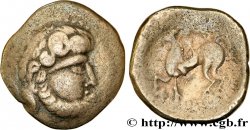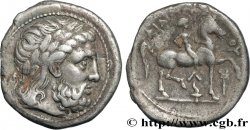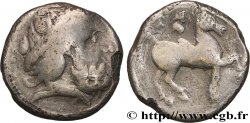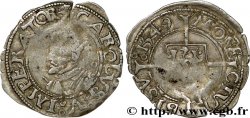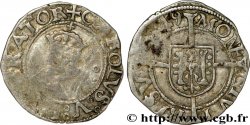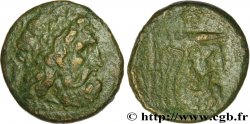bga_331055 - DANUBIAN CELTS - TETRADRACHMS IMITATIONS OF PHILIP II AND HIS SUCCESSORS Tétradrachme “au monogramme d’Audoléon” et au triskèle - collection Trampitsch
无库存.
所有在网站上销售的产品 (2014)
价格 : 1 000.00 €
所有在网站上销售的产品 (2014)
价格 : 1 000.00 €
种类 Tétradrachme “au monogramme d’Audoléon” et au triskèle - collection Trampitsch
日期: c. IIe-Ier siècles AC.
材质 silver
直径 23 mm
模子方针 6 h.
重量 12,10 g.
稀少度 R2
关于品相的说明
Magnifique monnaie complète et homogène, avec une agréable patine grise de collection ancienne
出版目录中的项代码 :
家谱
Cet exemplaire provient de la collection A. Trampitsch n° 361, dispersée par J. VINCHON
正面
正面的文字 ANÉPIGRAPHE.
正面的说明书 Tête barbare, laurée et barbue de Zeus à droite.
背面
背面的文字 ANÉPIGRAPHE.
背面的说明书 Cavalier très stylisé, tenant un bâton, sur un cheval réaliste avec une queue très développée ; une volute devant le poitrail, un pi bouletée sous la jambe gauche du cheval et un triskèle sous le ventre ; derrière le cavalier, une arabesque.
评论
Sur ce type, la couronne de laurier est très importante d'où l'appellation de "Verkehrten Lorbeerkranz".








 对产品描述纠错
对产品描述纠错 打印
打印 分享我的选择
分享我的选择 提问
提问 Consign / sell
Consign / sell
 产品介绍
产品介绍